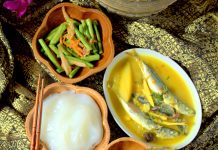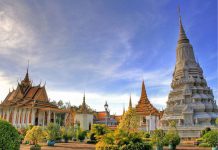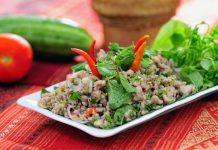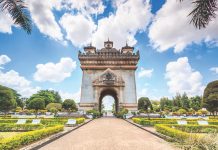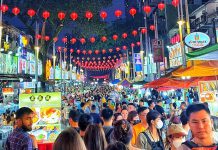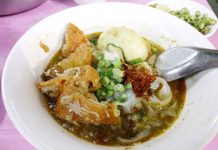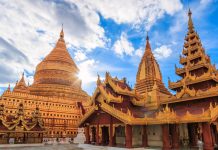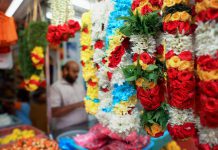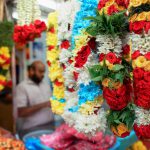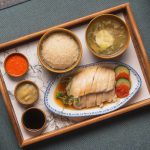Your visit to Singapore isn’t complete if you haven’t explored Little India, one of Singapore’s most colourful ethnic enclaves. The bustling streets of Little India are filled with traditional eateries, vibrant markets, iconic temples and hidden gems that truly reflect Indian culture.
From indulging in delicious street food to exploring unique shops, here are six ways to experience the rich culture of Little India.
1. Dive into the past at Indian Heritage Centre
Step into the Indian Heritage Centre (IHC), where history comes alive in the heart of Little India.
Not your average museum, the IHC serves as a vibrant cultural hub within the Singapore National Heritage Board’s museum family. It’s a place where the past meets the present through a dynamic calendar of performances, workshops, symposiums, masterclasses, and festive events that celebrate the Indian community in Singapore.
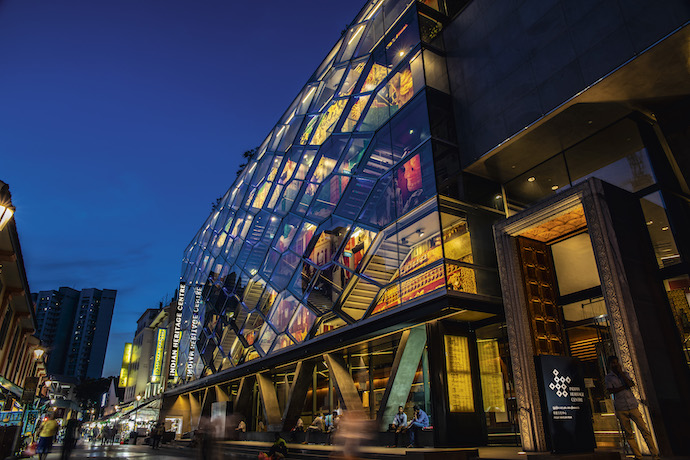
As you explore IHC’s five permanent galleries, you’ll uncover a treasure trove of artefacts and stories that spotlight the Indian community’s rich history. From ceremonial gold to rubies and textiles, the IHC displays an array of personal and communal treasures.
Enhance your visit with virtual guides and interactive gameplay that make history come alive and relevant. These engaging features are designed to deepen your understanding of the exhibits, while ongoing research initiatives promise the thrill of new discoveries and stories with each visit.
Alternatively, join a free guided tour led by knowledgeable docents who provide insights into the scholarly research and personal stories behind the exhibits. Starting from the 1st-century interactions, these 60-minute tours offer a comprehensive exploration of the Indian legacy in Singapore. For those visiting in groups, the IHC can accommodate up to 20 guests per tour.
2. Discover Indian cuisine at Little India’s traditional eateries
Ready to tickle your taste buds? Embark on a gastronomic adventure through the heart of Little India, where the tantalising aroma of authentic Indian cuisine and aromatic spices fill the streets and beckon food lovers from all walks of life.
As you meander through the streets, the fusion of flavours from different regions of India fills the air, inviting you to sample a delectable array of Indian street food.
Whether you’re a fan of vegetarian dishes or a connoisseur of succulent meats and seafood, explore the countless eateries and choose from a wide range of vegetarian, meat, and seafood dishes.
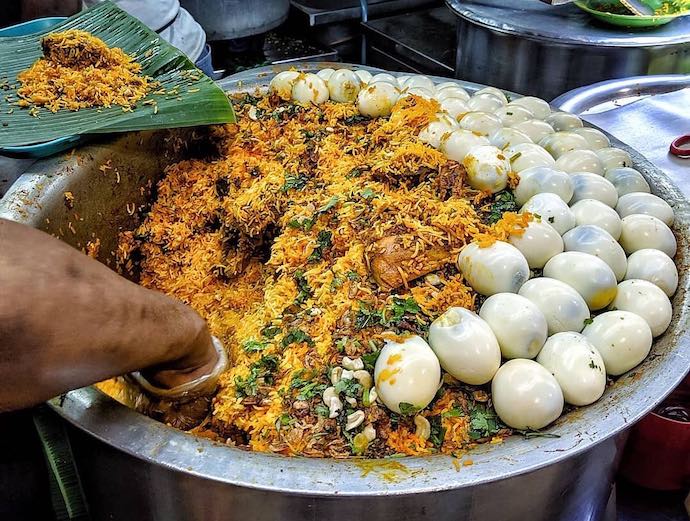
Photo: @eatinginberlin/Instagram
A must-try is the iconic biryani, a flavourful rice dish that’s a staple in Indian cuisine. It’s traditionally made by layering basmati rice with marinated meats like chicken, mutton, lamb, beef, prawn or fish, all infused with a variety of fragrant spices. Vegetarian versions are equally popular, featuring hearty vegetables and sometimes paneer (Indian cottage cheese) as substitutes for meat.
As you explore, make sure to drop by some of the famous Indian eateries and cafes here such as Mr Biryani, Madras New Woodlands, and The Banana Leaf Apolo, for an experience wrapped in tradition so much so that it will transport your senses to the heart of South India.
3. Explore Little India’s vibrant shops and markets
Venture into the colourful markets and stores where you will find a variety of traditional Indian clothing, aromatic spices, unique trinkets and more. As you walk down the bustling streets, spot the vibrant displays of traditional Indian clothing, with mannequins draped in elegant sarees and sparkling accessories. The elegance of sarees, the shimmer of bangles, and the rich colours of tunics, plus the symphony of Kollywood or Bollywood beats and spiritual music emanating from the CD shops, create a lively backdrop.
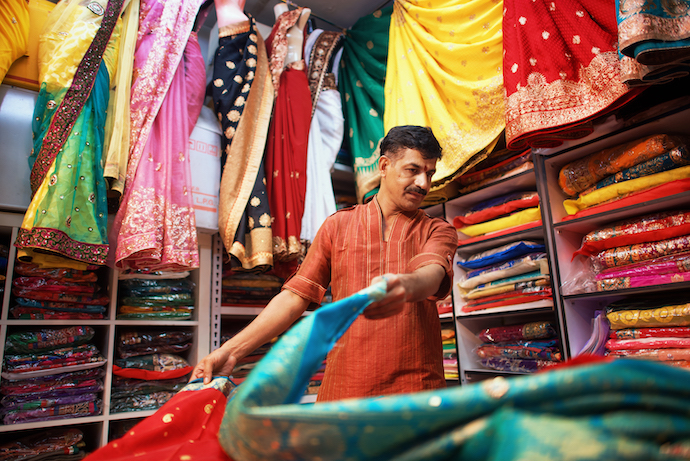
You’ll definitely come across stalls that sell jasmine flowers crafted into floral wreaths. These fragrant decorations are not only beautiful but also hold cultural significance, often used in weddings, religious ceremonies, and as offerings in temples.
A must-visit is Tekka Market, a bustling wet market along Buffalo Road, known for its array of fresh produce and affordable goods. The first floor is a foodie’s delight, featuring a food centre where you can indulge in everything from aromatic biryani to thosai (thin, crispy pancake). The other half of the first floor houses the wet market section, where locals shop for their daily meats, seafood and more at competitive prices.
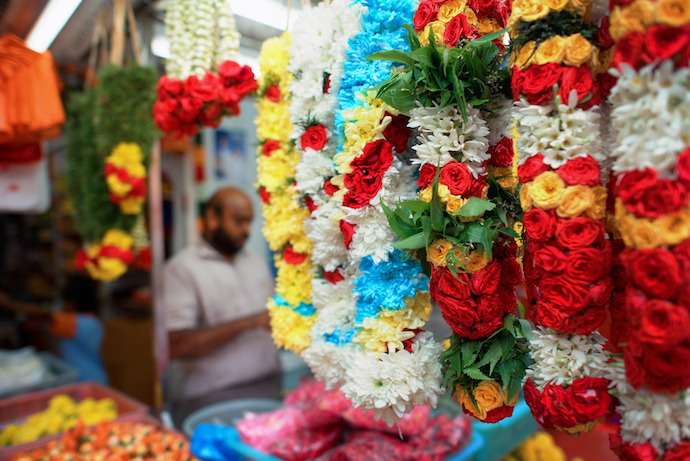
If you’re in the mood for some serious shopping, head up to the second floor where you’ll find an array of traditional Indian costumes. It’s a haggler’s paradise – be prepared to negotiate to snag the best deals. Hidden among these stalls, tucked away in random corners are tailors, surrounded by piles of fabric for custom-made garments.
For those who love a good find, make Serangoon Road your next stop. Discover a myriad of textiles and accessories that complete a traditional Indian outfit at the shops along the roads. And if your shopping list extends beyond fabric, head to the 24-hour Mustafa Centre, a shopping mall along Syed Alwi Road that offers an extensive range of products – from cosmetics, fragrances and gold jewellery to luggage, electronic items and clothing at affordable prices.
4. Visit Little India’s iconic temples
Uncover the rich history and spiritual significance of Indian culture by visiting the iconic temples in Little India, each brimming with cultural stories and architectural marvels.
A visit to Sri Veeramakaliamman Temple, one of the oldest temples in Singapore, is a must with its intricate architecture and beautiful shrines. Originally known as Soonambu Kambam Kovil or “temple at the village of lime,” it was named after the lime kilns in the area.
In 1908, when daily-rated municipal labourers managed the temple, they imported a statue of the goddess Kali from South India and built the main hall and shrine. By the 1930s, additional significant statues were installed, enhancing its spiritual and architectural richness. Today, it stands as a conserved building, a testament to the enduring legacy of the Indian community in Singapore.
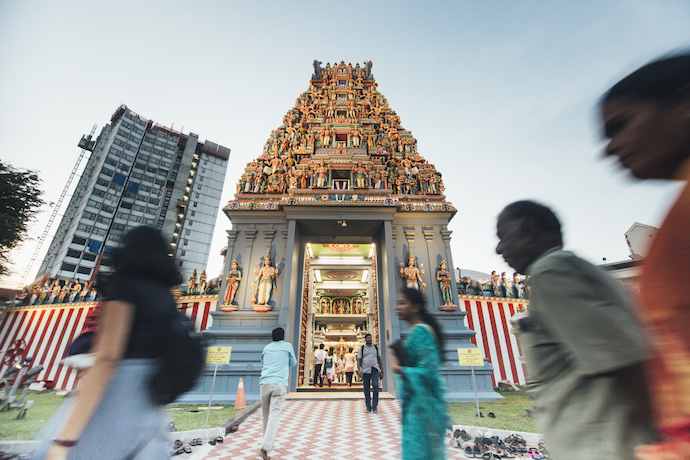
Photo: Singapore Tourism Board
A 10-minute walk from Sri Veeramakaliamman Temple is Sri Srinivasa Perumal Temple, known for its stunning tower adorned with colourful statues of Hindu deities. The temple serves as a focal point for the annual Thaipusam festival, drawing devotees and tourists alike to witness its grand processions.
About 20 minutes away, Masjid Abdul Gafoor is another striking example of the rich architectural heritage found among Singapore’s religious sites. This mosque serves as a living monument to the Tamil and Baweanese pioneers whose contributions were vital to the development of colonial Singapore.
As you wander through these sacred sites, learn about the cultural traditions of these temples, including their religious practices and festivals.
5. Immerse in festive celebrations on Deepavali
Every year, during Deepavali, which usually falls between October and November, Little India transforms into a kaleidoscope of light and colour, with elaborate decorations and lights, celebrating the festival of lights. Since 1989, the Deepavali Light-Up has become a key highlight of Singapore’s cultural calendar.
In 2024, the streets were ablaze with vibrant colours, lighting up more than 2km of the district with a festive brilliance that could light up the night sky.
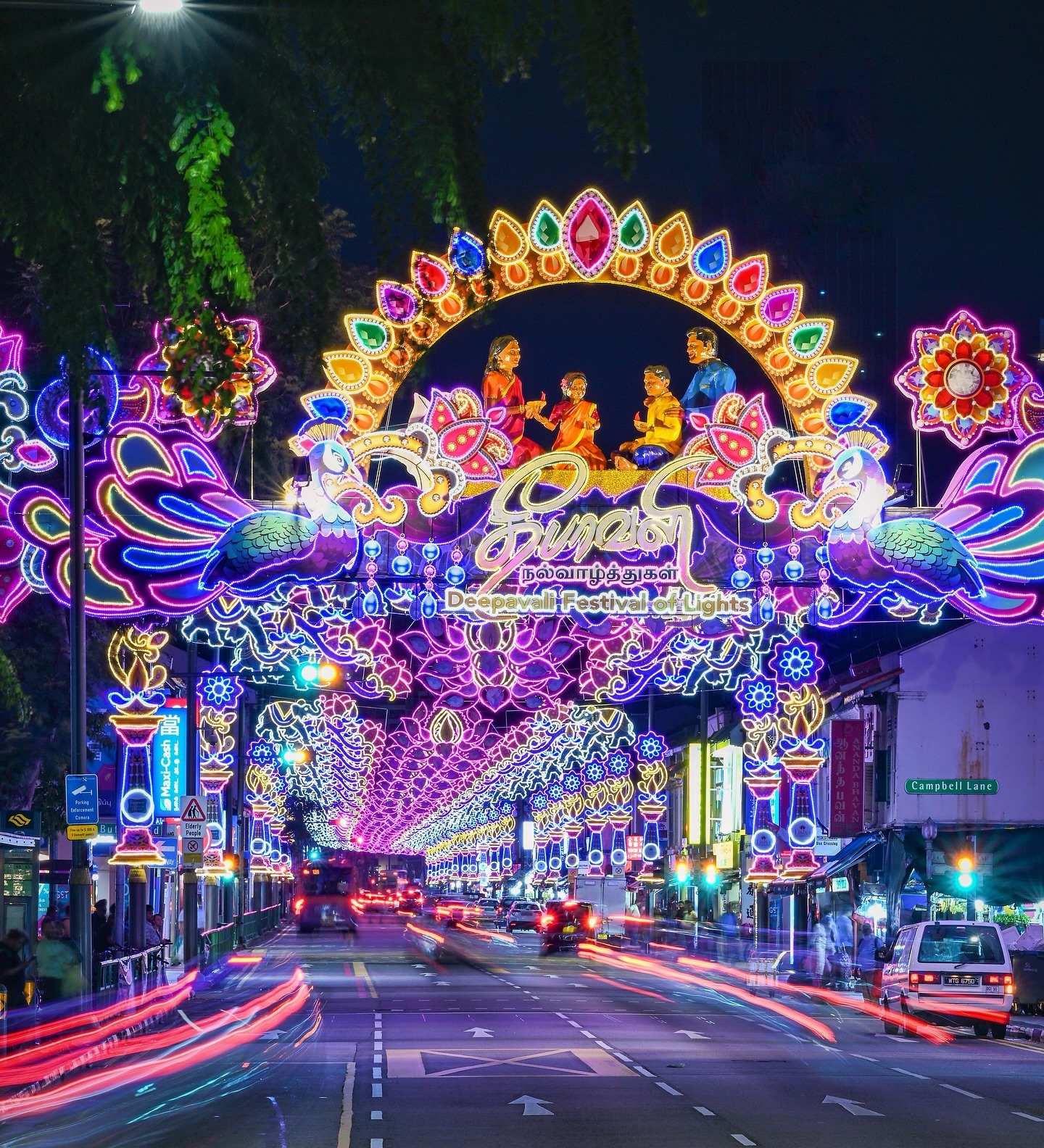
Lights and decorations aside, this festival also brings with it a flurry of activities. Sample festive flavours through a variety of traditional dishes and sweets at the food bazaar. Right in the heart of this bustling festival is the Deepavali Festival Village along Campbell Lane. This bustling marketplace will be filled with stalls selling traditional Indian clothing, snacks, intricate handicrafts, and festive decorations at a bargain.
6. Try henna art
For a more immersive cultural experience, try henna art, a traditional Indian body art form.
Also known as mehndi, henna is a form of body art from ancient India, where intricate designs are created on a person’s skin using a paste made from the henna plant. It is most commonly associated with weddings and is an essential part of bridal preparations in Indian culture. It is believed to relieve the bride of any stress before her big day and is also thought to bring good fortune and blessings to the bride and groom. Apart from its cultural significance, henna art is also a popular choice for tourists seeking a one-of-a-kind souvenir.
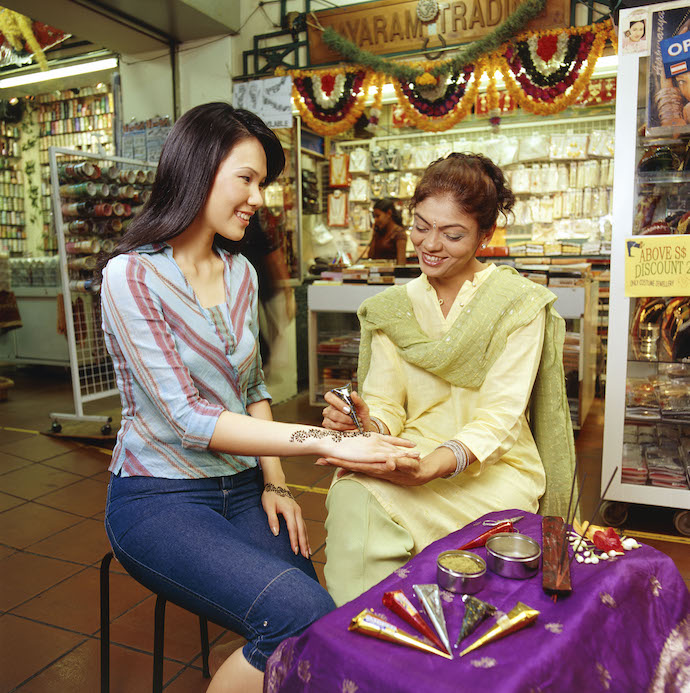
There are several stalls and shops in Little India that offer henna services, each with its unique style of designs. From classic floral motifs to modern designs that twist up the arm in stunning spirals, swing by one of the bustling henna stalls and let the artists work their magic.
This article has been edited and adapted from Now Boarding by Changi Airport’s “Exploring the delights of Little India”

